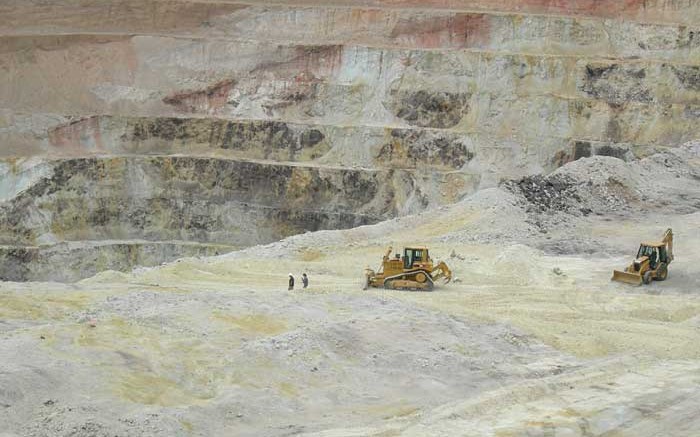VANCOUVER — Molybdenum oxide prices have been on the rise over the past six months — jumping 40% to sit at US$13.40 per lb. at press time — and that’s good news for U.S.-based General Moly (TSX: GMO; NYSE-MKT: GMO) and its portfolio of advanced-stage assets in Nevada.
The company recently resolved legal issues surrounding the Bureau of Land Management (BLM) permits at its Mt. Hope moly project, and on July 24 released a prefeasibility study (PFS) on its Liberty moly–copper project that models a long-life operation with relatively reasonable capital requirements.
General Moly announced an upcoming preliminary economic assessment (PEA) at Liberty in April. At the time the company outlined an open-pit mine plan focusing on early stage starter pits that would target the project’s historic copper resources.
According to technical reports the highest-grade copper resources are located in three satellite deposits southeast of the main moly orebody. Based on historic resource calculations the deposits could host 45 million to 91 million tonnes of material averaging between 0.3% to 0.35% copper contained mostly in chalcocite–digenite, chalcopyrite and covellite mineralization, which is amenable to standard froth flotation.
Since that time, things have changed for the company: moly prices are still on the rise, and with the quality of underlying data, General Moly has elevated its study to the PFS level. The company’s concept subsequently transitioned to a broader mine plan underpinned by “maximizing upfront value based on reasonable long-term copper and molybdenum prices.”
“Optimization of the mine plan includes incorporating a portion of the shallow sulphide chalcocite copper mineralization later in the mine sequence, as its net realizable value per [tonne] is less than some of the existing resources containing high-grade molybdenum with copper by-product mineralization,” CEO Bruce Hansen noted in July.
What has emerged is a mine plan that aims to leverage Liberty’s production history — which has left General Moly with pre-existing infrastructure and open-pit operations — to minimize development costs. And based on the updated PFS, it looks like the company has succeeded.
Compared to an original PFS filed in 2011, Liberty’s capital expenditures (capex) are down around 40%, or US$234 million, to US$366 million. The smaller operation drops nameplate throughput capacity at the mill by 27% to 24,000 tonnes per day and drops mine life by a decade to 32 years.
The updated mine plan results in a total of 402 million lb. moly and 308 million lb. copper production over life-of-mine, with grades pegged at 0.078% moly and 0.098% copper. This compares to original production estimates of 598 million lb. moly and 534 million lb. copper over a 42-year mine life, with average mill grades of 0.068% moly and 0.077% copper.
Anticipated on-site cash costs are down US69¢ over the mine life to US$6.29 per lb. moly, with copper assumed as a by-product credit. Total cash costs are estimated at US$7.94 per lb. moly, which includes off-site roasting, smelting and shipping.
Proven and probable “reserves” have declined, though the decrease comes with a higher grade. Total reserve-quality material is pegged at 280 million tonnes grading 0.078% moly and 0.098% copper for 482 million contained lb. moly and 606 million contained lb. copper. General Moly’s original mine plan contemplated “reserves” of 490 million tonnes at 0.068% moly and 0.08% copper for 739 million contained lb. moly and 893 million contained lb. copper.
Moly price assumptions remain unchanged at US$15 per lb., while modelled copper prices have increased by US75¢ to US$3.25 per lb. Liberty generates a US$325-million after-tax net present value (NPV) at an 8% discount rate and a 17.4% internal rate of return (IRR), assuming toll roasting. That compares to a US$538-million NPV and a 19.7% IRR under the original model.
“The updated mine plan allows us to leverage significant existing infrastructure to reduce initial capital costs while retaining the capability to expand post start-up and reduce operating costs. Liberty provides significant optionality and flexibility to develop at a low entry capital investment relative to its NPV,” Hansen stated in the release, noting that the project could begin construction in 2017 pending Nevada state permits. He added that a “less favourable” economic plan could be used for private lands if permitting is delayed.
General Moly shares have traded within a 52-week range of 90¢ and $3.60, and closed up 3% at $1.14 per share at press time.
The company has 92 million shares outstanding for a $102-million market capitalization, and reported US$17 million in cash at the end of March.


Be the first to comment on "General Moly aims to restart Liberty moly-copper mine in Nevada"